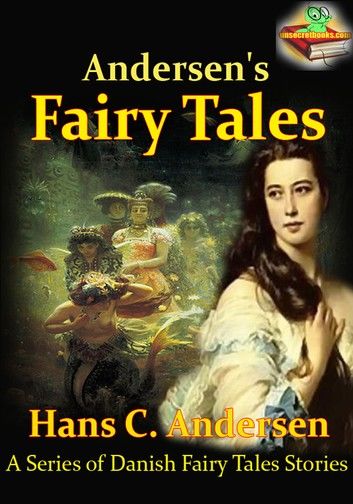| FindBook |
有 1 項符合
Andersen's Fairy Tales: Bedtime Story的圖書 |
 |
Andersen's Fairy Tales: Bedtime Story 作者:Hans Christian Andersen 出版社:Unsecretbooks.com 出版日期:2013-09-27 |
| 圖書館借閱 |
| 國家圖書館 | 全國圖書書目資訊網 | 國立公共資訊圖書館 | 電子書服務平台 | MetaCat 跨館整合查詢 |
| 臺北市立圖書館 | 新北市立圖書館 | 基隆市公共圖書館 | 桃園市立圖書館 | 新竹縣公共圖書館 |
| 苗栗縣立圖書館 | 臺中市立圖書館 | 彰化縣公共圖書館 | 南投縣文化局 | 雲林縣公共圖書館 |
| 嘉義縣圖書館 | 臺南市立圖書館 | 高雄市立圖書館 | 屏東縣公共圖書館 | 宜蘭縣公共圖書館 |
| 花蓮縣文化局 | 臺東縣文化處 |
|
|
Hans Christian Andersen often referred to in Scandinavia as H. C. Andersen; April 2, 1805 – August 4, 1875) was a Danish author and poet. Although a prolific writer of plays, travelogues, novels, and poems, Andersen is best remembered for his fairy tales. Andersen's popularity is not limited to children; his stories—called eventyr, or "fairy-tales"—express themes that transcend age and nationality.
Andersen's fairy tales, which have been translated into more than 125 languages, have become culturally embedded in the West's collective consciousness, readily accessible to children, but presenting lessons of virtue and resilience in the face of adversity for mature readers as well. They have inspired motion pictures, plays, ballets, and animated films.
In the spring of 1872, Andersen fell out of his bed and was severely hurt, never fully recovering. Soon after he started to have signs of liver cancer, dying on August 4, 1875 in a house called Rolighed (literally: calmness), near Copenhagen, the home of his close friends, the banker Moritz Melchior and his wife. Shortly before his death, he had consulted a composer about the music for his funeral, saying: "Most of the people who will walk after me will be children, so make the beat keep time with little steps." His body was interred in the Assistens Kirkegård in the Nørrebro area of Copenhagen. At the time of his death, Andersen was internationally treasured. The Danish Government paid him an annual stipend as a "national treasure". Even before his death, steps had already been taken to erect a large statue in his honor by sculptor August Saabye, which can now be seen in the Rosenborg Castle Gardens in Copenhagen.
|











